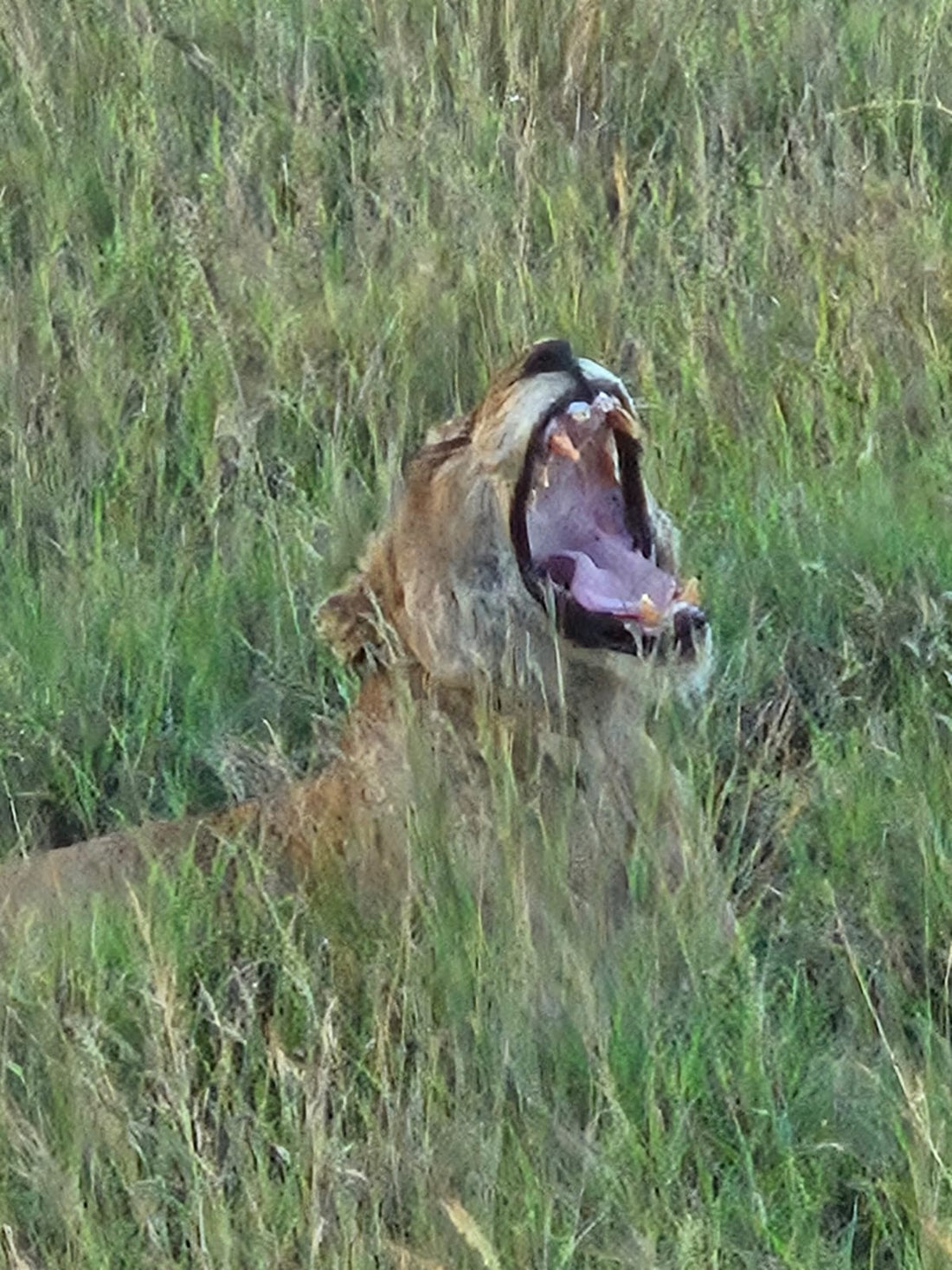
Man eaters....or adaptable beasts?
Share
Lions have always been a favorite sighting for my family. We have been visiting the Kruger National Park for many years and have had some amazing experiences. Aside one or two episodes of lions actually walking around, or half hearted opportunistic hunting attempts, the big cats in our photos are recorded lying in various positions and in different states of comatose relaxation (very similar to my felines at home). It is almost understandable when the odd tourists decides to get out of the vehicle for an up close and personal photoshoot....almost!

It is nigh on they lead a double life. The soft and cuddly creatures of the day turn into highly sophisticated and ruthless killing machines after sun set.
I have always been fascinated on the subject of 'man eaters' after the movie "The ghost and the darkness", based on the story of the two Tsavo lions that are infamous for having killed several men.
In 1898, Lt Col John Henry Patterson travelled to Kenya as a civil engineer to oversee the building of a bridge over the Tsavo river for a railway connecting Mombasa and Nairobi.
Between March and December 1898, two maneless male lion brothers decimated approximately 35 workers (initial number thought to be around 135/140). They caused absolute terror by walking into camp at night, and pulling people out of their tents then dragging them into the bush to devour them. The sounds of growls, screams, tearing and crunching of flesh and bones was enough horror to bring construction to a grinding halt for several weeks. Eventually, after numerous frustrating failed attempts, Patterson (an accomplished and experienced hunter) managed to kill them, one at the time. He kept them as trophies for years. In 1920 he sold the remains to a Chicago museum where they are still viewable to this day.

Today all Tsavo male lions are still maneless. This is an interesting fact, scientists suspect it may be an adaptation to the thorny bush they reside and hunt in. The other interesting fact is that they seem to have higher levels of testosterone, thus making them more aggressive. These males are mostly solo leaders of their prides and almost never form coalitions, unlike other lion populations across Africa.
The two lions at the museum where studied in depth to try explain their extreme behavior. The skull examination disclosed similarities to zoo lions, suggesting a soft diet compared to their wild counterparts. Furthermore substantial tooth pathology was found, a possible factor in making these predators turn to humans as food. DNA of hair remains in between their teeth, showed that they fed on zebra, giraffe, waterbuck, gemsbok and humans. The lack of buffalo hair is significant as Tsavo lions favorite diet is and was buffalo. Another factor could be that during that time, the Rinderpest outbreak (https://creaturenetlink.co.za/blogs/personal-blogs/rinderpest) reduced game numbers significantly to encourage the search of a different food sources. Travelling slave caravans, reinforced the behavior by scattering bodies of the deceased in the wake of their travels. The death rate was high due to poor living conditions and the sleeping sickness. Corpses were buried in shallow graves, if at all, along the routes.
The above are, in my mind, plausible reasons to explain the honing of these highly intelligent and adaptable predators, to man as a food source.
A little closer to home, in a different part of Africa at a different time...….

The above mentioned Kruger National Park is the home to a couple of man eaters itself. This fact has remained quiet and out of the international news....for good reasons.
In modern times, Mozambicans have crossed the south African border in search for a better life and prosperous future. Crossing trough the Kruger National Park seems an easy way to avoid the authorities.
In 1970 the Mozambicans engaged in a war of independence from Portugal, which was the prequel to a civil war raging for 20 years. This, in turn displaced millions of people, forcing them to look elsewhere for survival.
The refugees joined the local poachers in cutting the perimeter fence and getting into the reserve. Three main routes were travelled. In the south it followed the crocodile river. The middle took them through the bush past Satara rest camp and the northern route adhered along the power lines.
For protection, taking muti (traditional medicine or magical charms) along was popular. Guides also became sought-after, and charged to escort people across. It was still very risky, especially for the poor people not being able to keep up with the group. They were left behind, and left to fend for themselves. Travelling was only occurring at night to avoid rangers and antipoaching patrols. Caravans adopted the habit of making as much noise as possible with pots and pan, or anything they had with them. to deter wild animals. The lions soon learned to recognize and associate the noise with an easy meal They became more confident and experienced in their hunting methods.
Some prides developed a 'taste' for hunting humans. Through the years some of these man eating prides were hunted out, to prevent the 'skill' being past down to younger generations. However, as the problem of refugees is an ongoing practice, albeit on a much smaller scale (not that there are any accurate numbers available), some prides in the park now are, even now, known as 'man eaters'. The stories that were conveyed by some of the survivors are truly horrific. Then numbers killed in the past 100 years must be staggering, considering the fact that it is still carrying on on a daily (nightly) basis. Ranger patrols regularly find human remains, torn clothes and other scattered belongings. The numbers of these victims must surely put the Tsavo casualties to shame.
As interesting as this is, we must not loose sight of the terror of being faced with a lion in hunting mode after dark, and the desperation that drives people to take the risk for themselves and their families.
